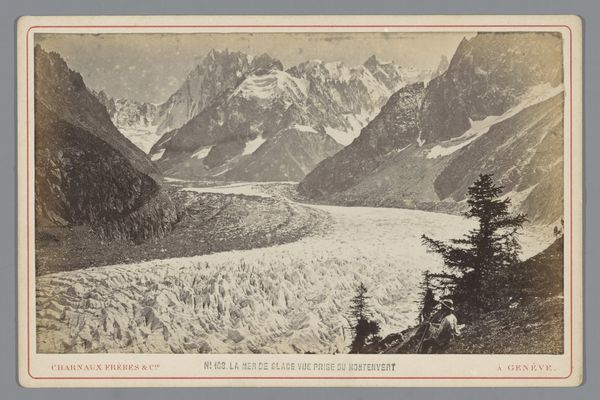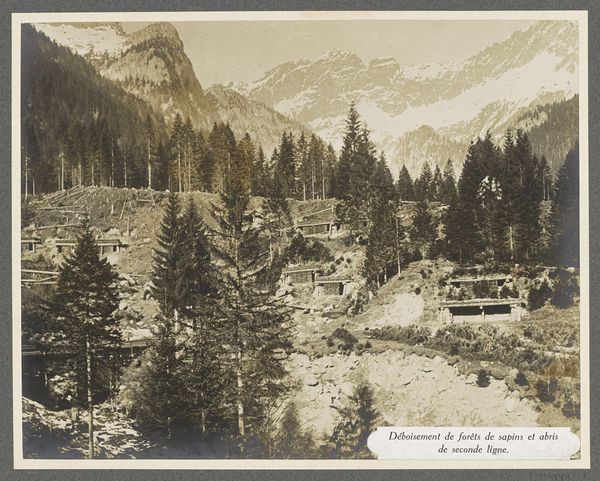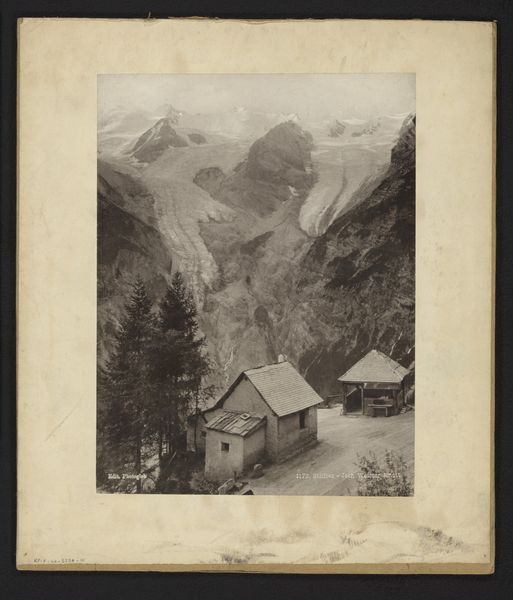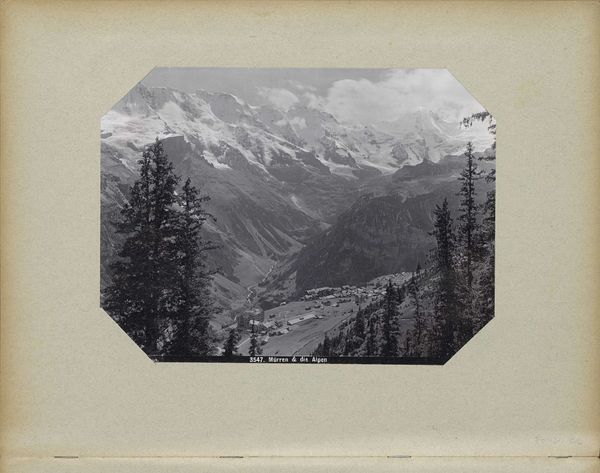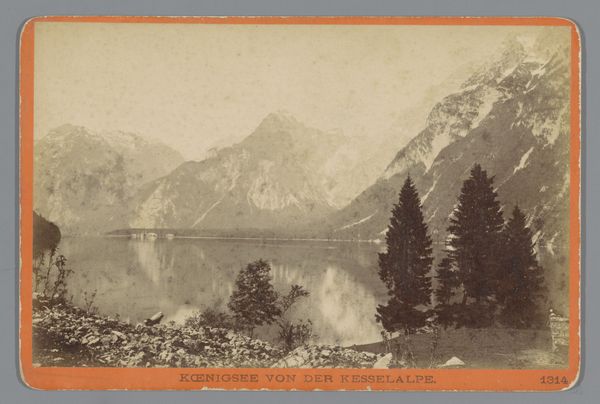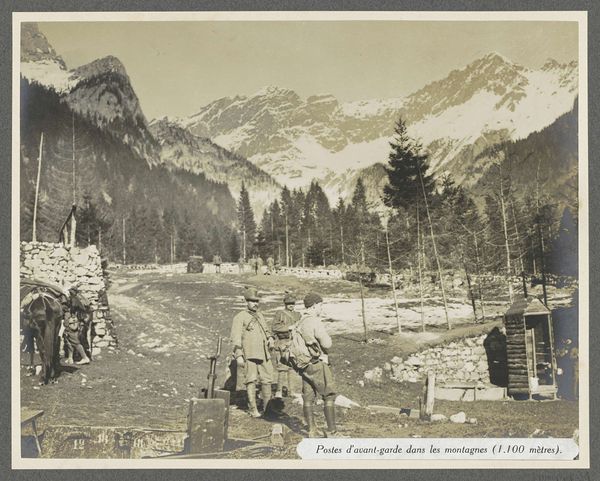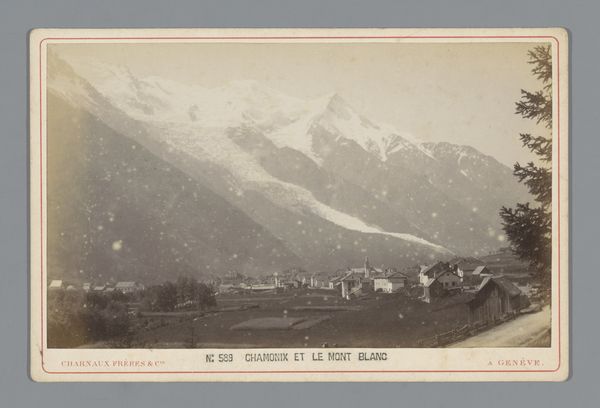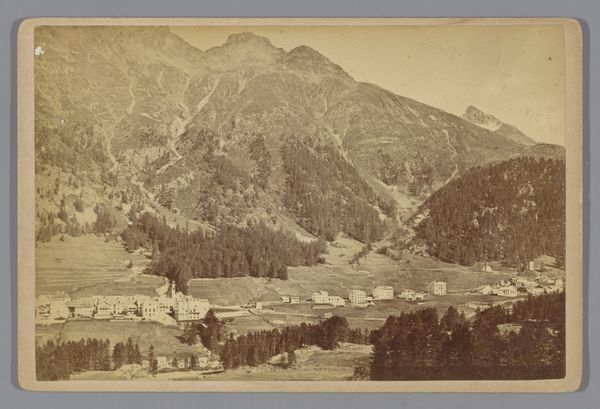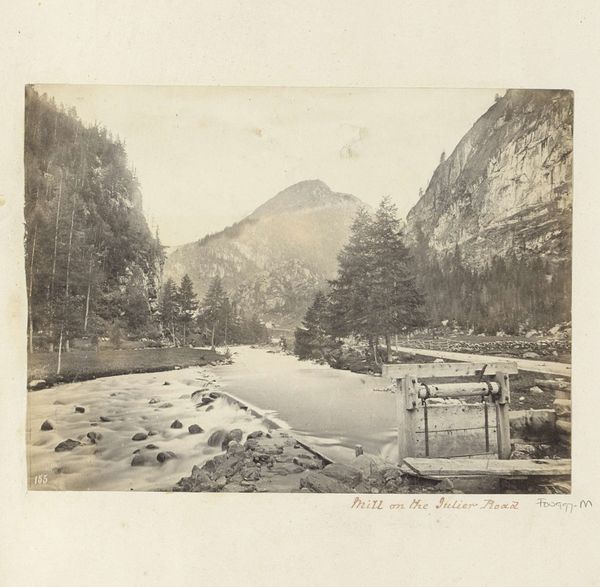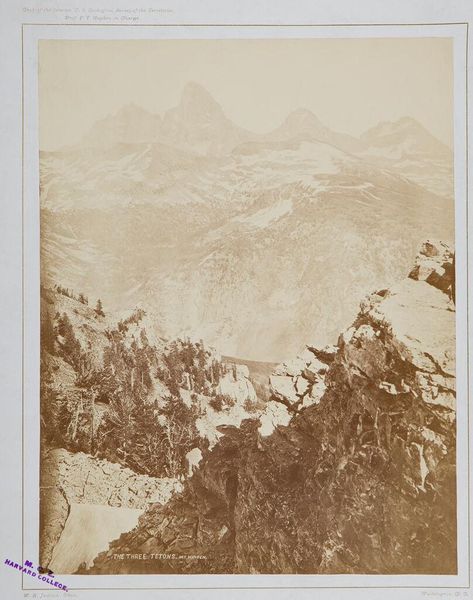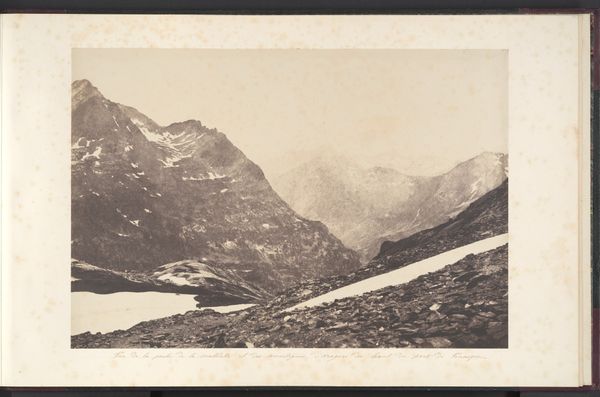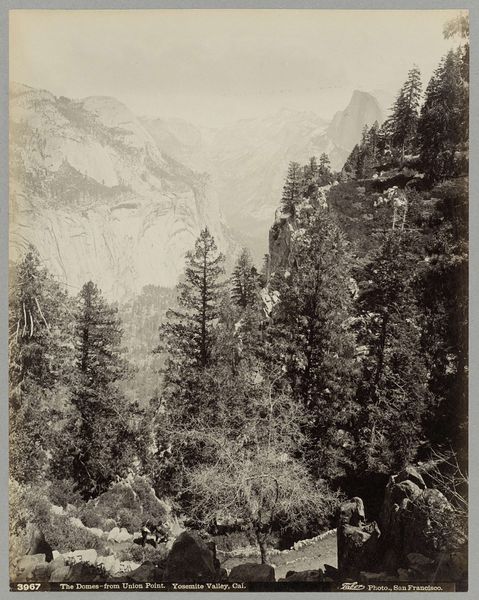
photography
#
pictorialism
#
landscape
#
photography
#
mountain
Dimensions: height 160 mm, width 102 mm
Copyright: Rijks Museum: Open Domain
Editor: So this is "Gezicht op de Glacier des Bossons en de Mont Blanc" taken by Francis Frith, sometime between 1880 and 1920. It’s a photograph, and I find the tones of it very evocative. How do you read the textures in this landscape? Curator: The surface of this image intrigues me; a record of Frith's material choices and photographic processes. Consider the paper, the chemicals used to develop the image—how they all come together to render not just the majestic Mont Blanc, but also the human impact upon that landscape. This bridge, constructed and presumably maintained—whose labor went into that? Editor: That's a fascinating way to look at it. I was so caught up in the grandeur of the mountains that I missed that layer. Curator: Precisely. And the picturesque framing! The careful arrangement of the natural elements with the bridge almost invites us to reflect on access, on the changing experience of the natural world through increased industry, new markets, new materials. Editor: I see what you mean. So the photograph itself becomes part of the story about accessing and consuming this view. But do you think Frith was necessarily thinking about that as he composed the shot? Curator: Intent is always difficult to ascertain. But we can be fairly confident that the commercial value of mountain photography was booming in Europe, that improved railways and evolving production methods transformed leisure into business. Were such landscape photographs conceived and consumed similarly by the aristocracy and the rising middle classes? How does the means of production impact art appreciation? Editor: Thinking about this photograph in terms of the social conditions and materials behind it definitely shifts my perspective on landscape photography generally. Thanks! Curator: Indeed, it’s in acknowledging the physical and economic conditions that art obtains its full meaning.
Comments
No comments
Be the first to comment and join the conversation on the ultimate creative platform.

